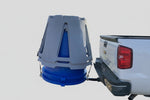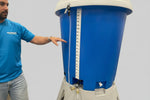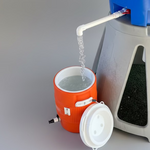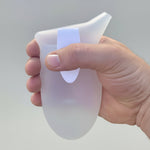Beating the heat has long been part of what makes camp camp, of course, and while the connection between any single weather event and climate change varies, the effects of global warming are being felt in many ways. Here at WaterMonster our water tanks, spigots, dispensers, and water accessories are designed to make keeping your camp employees and patrons hydrated quickly, efficiently, and with non-transfer of germs in mind.

Last year, the coronavirus pandemic drove camp enrollment down to 19.5 million from 26 million, said Kyle Winkel of the American Camp Association. As this year’s season begins, camp directors and counselors will employ a variety of techniques honed over the years to deal with spiking temperatures. In addition, with more people returning to camps, having an adequate source of water for everyone to access safely and quickly is increasingly important.
- Start and end your day with a 250 ml serving of water. Your body loses water while you sleep, so drink a serving before bed and again when you wake up. Making sure you have access to convenient and large, cooled dispensers of water is even more important when you are away from an indoor source of water.
- Drink before you are thirsty. By the time you feel thirsty; you have probably already lost two or more cups of your total body water composition. Drink plenty of water throughout the day. Again, making sure water is abundant and convenient removes any issues of accessing water at very warm times of the day while outside.
- It’s important to note that although coffee and tea do have a diuretic effect, they do provide a significant amount of fluid.
- Keep drinking water even when it is cold outside. You may not feel thirsty as you do when it's hot, but you are still going to lose water through perspiration. You also lose fluids through exhaled air. When cold, dry air is inhaled, it is warmed and moistened in the lungs and exhaled as humid warm air. This process makes intense demands on the body's water supply.
- Average sweat rates can vary from 0.5L/hour to more than 2.5L/hour. Knowing your sweat rate will help you to better prepare for both training and competition. Calculate your sweat rate. Taking the time to calculate how much you sweat is a fundamental consideration for optimal hydration. When you are not sweating enough, your body is overheating, and your water hydration levels have likely dipped below an optimal level.
- Keeping water on you as you are outside can be a great way to avoid hydration issues. With one of our tank water solutions installed on your facility, making sure everyone has access to refill water jugs and bottles is made easier.








